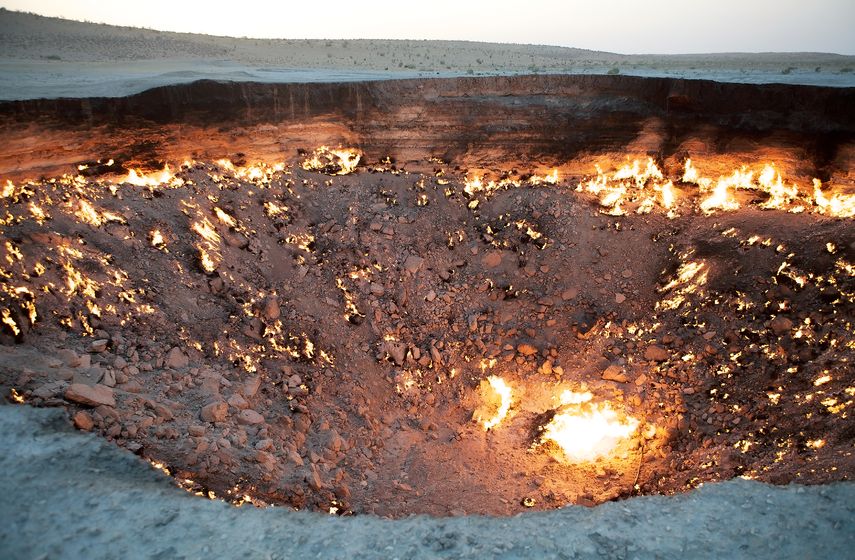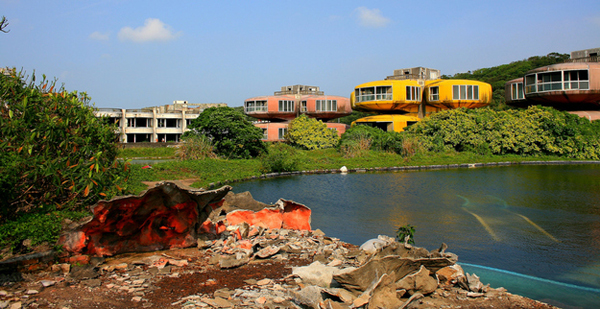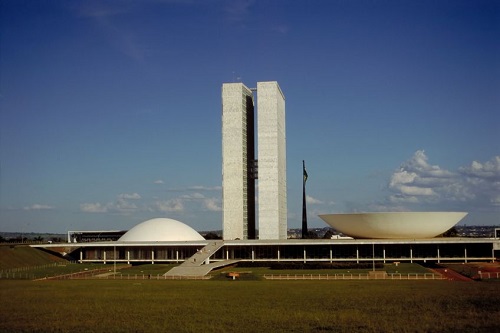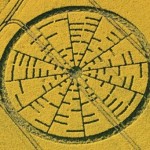14 Real-Life Destinations Sci-Fi and Fantasy Nerds Should Visit
Bring out the bucket list.
by WindowSeat.ph | August 03, 2015
The world is full of natural and man-made wonders. Here are a few travel motivations for people who crave the incredible.
Socotra Island, Yemen

Much like many of the strange places in fictional worlds, Socotra is enchanting. Nestled in high altitude far away from the mainland, the island’s 3,796 square kilometers is home to 50,000 Socotrans who don’t know their age nor birth date, and speak mostly Socotri, a language spoken in no other part of the world.
Socotra is home to hundreds of endemic or endangered species, including the strangely-shaped moisture-retaining Dragon’s Blood tree that oozes red sap (hence, the name). 37% of the island’s plant species, 90% of its reptile species and 95% of its land snail species are endemic.
Tourists can roam around the island’s Dragon’s Blood forests or swim in the dolphin-inhabited crisp blue waters.
Door to Hell, Turkmenistan

Hell isn’t in Derweze, Turkmenistan. The fiery depths of Door to Hell is just a natural gas field.
In 1971, Soviet engineers discovered the site and thought that it was a substantial site for an oil field. When they had started drilling, gas came out instead and parts of the site collapsed into the crater that you can see now. The engineers then figured it would be safer to just let the poisonous gas burn itself off—it hasn’t stopped. But don’t worry! It’s safe to visit.
Earlier this year, world-renowned explorer George Kourounis became the first human to reach the bottom of the pit. He rappelled down 100 feet to collect dirt samples.
The Eden Project, Cornwall, England

The Eden Project looks like a crime scene from the X-Files. But only because the attraction’s main features are the artificial biodomes. The steel-framed inflated plastic enclosures contain thousands of plant species from all over the world.
The complex was conceived by Tim Smit and designed by architect Nicholas Grimshaw and engineering firm Anthony Hunt and Associates. It took two and a half years to build and it officially opened to the public as an attraction in early 2001.
It was recently named Britain’s best landmark by a panel of experts.
Hoia Baciu Forest, Romania

Let’s start with this: Hoia Baciu was named after a shepherd who disappeared in the forest—with 200 sheep.
People who live near the forest avoid it as much as they can. People who have entered what locals call Bermuda Triangle of Romania reported nausea, vomiting, burns, scratches, anxiety and other strange physical and emotional reactions. There have also been reports of paranormal activity and mysterious orbs of light. And in the ’70s, the creepy forest was a popular place for alleged UFO sightings.
Vegetation in the forest, while dense, has been called “bizarre,” with trees having unexplained charring.
It could also be just a ploy to attract more tourists, right?
Pamukkale, Turkey

Pamukkale looks like a distant utopia. The name translates to “cotton castle,” a very apt description for the radiant white travertine terraces overrun by warm mineral-rich water.
Generations upon generations of humans have bathed in Pamukkale’s hot springs. Ancient Greco-Roman and Byzantine city of Hierapolis’ ruins sit on top of the white castle. Hotels and resorts stood in the ruins of the area, which is about 2,700 meters long, 600 meters wide and 160 meters high, until the middle of the 20th century when it was declared a World Heritage Site.
Establishments were demolished and tourists prohibited from wearing shoes and restricted from bathing in some areas in the terraces to protect the fibrous travertine. But given all the limitations, it’s a sight to behold—as utopias aren’t meant to be had.
Plain of Jars, Laos

No one knows where these large ancient jars came from. Now one knows why they’re there. And from most angles the place looks like a scene straight out of Andrei Tarkovsky’s Stalker.
This Lao tourist attraction, contrary to what the name suggests, isn’t a plain. It’s more of a bowl, actually. But no one really bothers because, you know, there are around 2,500 large ancient jars and “lids” of unknown use or origin mysteriously lying around.
One of the theories—or really, legends—say that they were made in the sixth century to brew rice wine that people drank to celebrate their liberation from cruel overlords by the Tai-Lao hero Khun Jeuam.
The Finnish Lapland

Those aren’t lumpy alien monsters waiting to pounce. They’re trees encased in snow in the Finnish Lapland.
The Lapland is the largest area in Finland. It’s about as close as anyone can get to a winter wonderland (and it’s also the home of Santa Claus, if that’s your thing).
For three months in the summer, the area turns into a land where the sun shines for 24 hours. In the winter, it turns into a viewing ground for snow-crusted trees against the famous Northern Lights.
Songdo, South Korea

Sangdo, or “the world’s first smart city,” looks a lot like the future our movies have promised us. It’s full of innovations, and it’s green and sustainable.
The city, unlike the world’s other future cities, wasn’t retrofitted with tech and innovation. Instead, it’s built from ground up—a huge chunk on reclaimed land—with the whole strategy in mind.
When it’s finished, 40% of the city will be open green space. This includes Central Park, which opened in 2009. The park covers around 1.3 million square meters and features a museum, ecotarium and water taxi service. It won’t open until probably the end of the decade, but it’s completely and comfortably livable for 40,000 residents and the 55,000 others who commute to the business district daily for work.
La Sagrada Familia Basilica By Antoni Gaudí, Barcelona

From this angle, the majestic basilica resembles an elaborate secret lair. It definitely isn’t a secret or a lair but it is very elaborate, so elaborate that it’s been under construction for the last 133 years and isn’t expected to be completed for 13 more.
The basilica is considered as Antoni Gaudí’s magnum opus. He diligently worked on it—and required painstaking perfection, like a true artist—until his death in 1926.
It was consecrated by Pope Benedict XVI in 2010 after the main nave was covered and an organ was installed, allowing use for religious services while still unfinished.
Tbilisi, Georgia

These shiny, boldly curved structures look lost in the ancient landscape. So lost that they look more like constructed sets for a sci-fi film rather than actual places.
The two ultramodern structures in the photo are the Philharmonic Building and the pedestrian Bridge of Peace. And while there’s no news yet about the massive, unfinished building, the bridge is fully functional and this part of Rike Park has been opened to the public.
P.S. all foreign visitors get free wine upon entry. Georgia, after all, gave wine to the world.
Gardens by the Bay, Singapore

The Supertree Grove in Singapore’s Gardens by the Bay feels like a man-made version of the Socotra plateau. They both have magical trees.
The Supertrees are basically vertical gardens that go up from 25 to 50 meters tall. 162,900 plants from a combination of than 200 species and varieties of bromeliads, orchids, ferns and tropical flowering climbers cover all 18 “trees.”
The Supertrees are smart, too! 11 of them are equipped with photovoltaic cells to harvest solar energy.
National Congress, Brazil

The National Congress Building in Brasilia, Brazil looks like a pretty serious spacecraft launch site.
The peculiar government building was designed and constructed from 1957 to 1964 by modernist and then Brasilia’s Chief Architect Oscar Niemeyer. The domed shape on the left is the seat of the Senate, the bowl-type shape on the right is the seat of the Chamber of Deputies, the two vertical structures in the middle are the office towers.
Niemeyer would later build the Cathedral of Brasilia, a conical structure with boomerang-shaped spires that extend from the top.
IJburg, Amsterdam

Here’s a non-dystopian Water World.
The neighborhood is built on artificial islands in east Amsterdam’s IJ Lake. There are currently six islands and they plan to build more in the future. IJburg was meant to be completed in 2012 but slow take-up caused delays in the phase 1 of the project.
When complete, the neighborhood will have 18,000 homes for 45,000 residents, and provide employment for 12,000 people. It will also have schools, shops, leisure centers, restaurants, a beach and a cemetery.
BONUS: Sanzhi Pod City, Taiwan

If flying saucers landed to make retirement communities in the ’70s, this is how it would’ve probably looked like.
The UFO City, as it’s alternatively called, was built in 1978 as a vacation resort marketed towards US military officers posted in East Asia. Two years later, the project was discontinued and abandoned due to investment losses and a series of unfortunate events (e.g. deaths from a number car accidents and a series of suicides). Locals claimed that the buildings were built over a burial site for Dutch soldiers back when the Netherlands established Taiwan as a colony.
The catch for this bonus is that the UFO City has ceased to exist. It was demolished in 2010 to make way for a new resort. But here it is before demolition, in all it’s abandoned, otherworldly glory.









